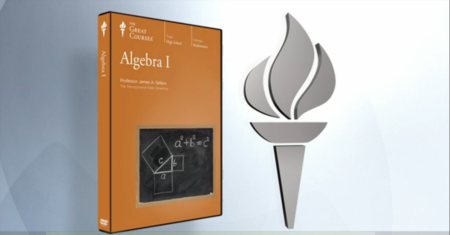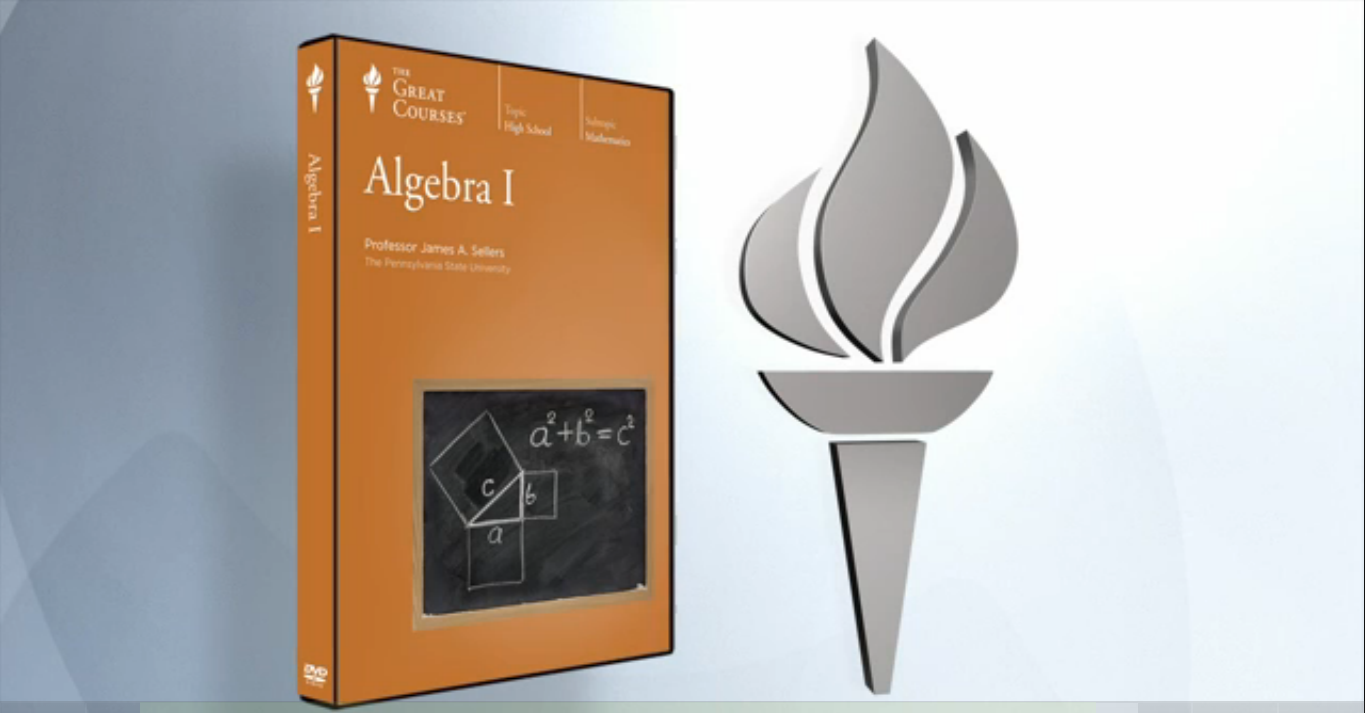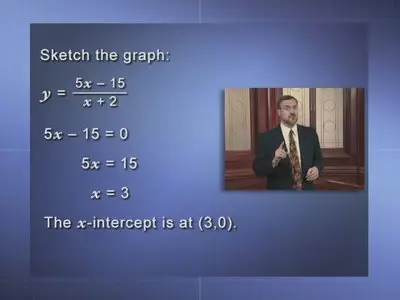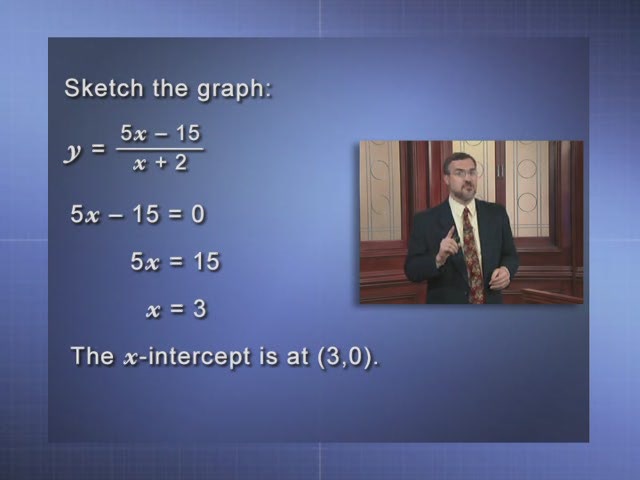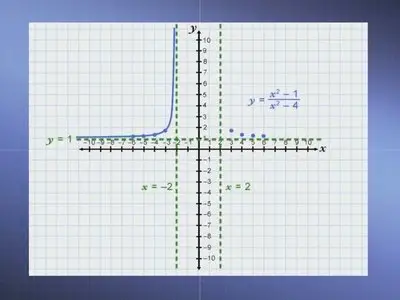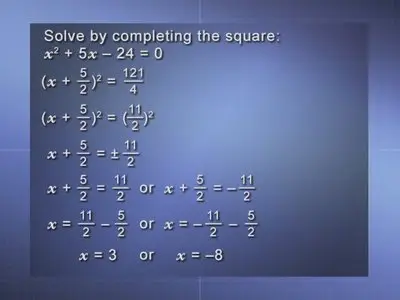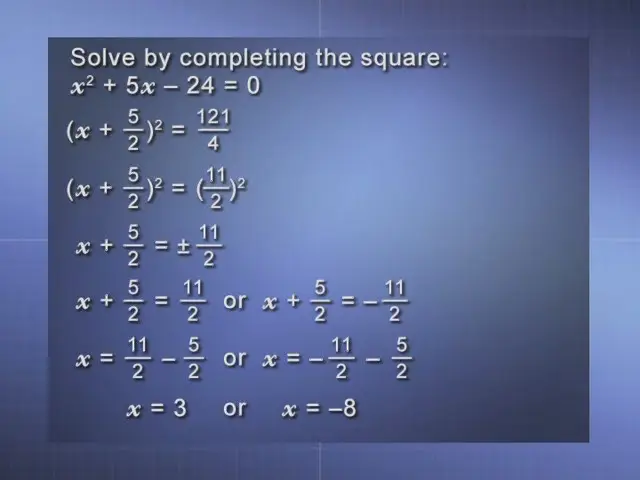TTC Video - High School Algebra 1 - Videos, Guidebook 3rd Edition
AVI | XviD 709kbps | English | 640x480 | 29.97fps | 36x30 mins | MP3 stereo 127kbps | 6.78 GB
Genre: Video Training
Algebra I is one of the most critical courses that students take in high school. Not only does it introduce them to a powerful reasoning tool with applications in many different careers, but algebra is the gateway to higher education. Students who do well in algebra are better prepared for college entrance exams and for college in general, since algebra teaches them how to solve problems and think abstractly—skills that pay off no matter what major they pursue.
Because algebra involves a new way of thinking, many students find it especially challenging. Many parents also find it to be the area where they have the most trouble helping their high-school-age children. With 36 half-hour lessons, Algebra I is an entirely new course developed to meet both these concerns, teaching students and parents the concepts and procedures of first-year algebra in an easily accessible way. Indeed, anyone wanting to learn algebra from the beginning or needing a thorough review will find this course an ideal tutor.
As Director of Undergraduate Mathematics at Penn State, Professor Sellers appreciates the key role that algebra plays in preparing students for higher education. He understands what entering college students need to have mastered in terms of math preparation to launch themselves successfully on their undergraduate careers, whether they intend to take more math in college or not. Professor Sellers is alert to the math deficiencies of the typical entering high school graduate, and he has developed an effective strategy for putting students confidently on the road to college-level mathematics.
Whatever your age, it is well worth the trouble to master this subject. Algebra is indispensible for those embarking on careers in science, engineering, information technology, and higher mathematics, but it is also a fundamental reasoning tool that shows up in economics, architecture, publishing, graphic arts, public policy, manufacturing, insurance, and many other fields, as well as in a host of at-home activities such as planning a budget, altering a recipe, calculating car mileage, painting a room, planting a garden, building a patio, or comparison shopping.
And for all of its reputation as a grueling rite of passage, algebra is actually an enjoyable and fascinating subject—when taught well.
Tips for Success
Algebra is a rich and complex subject, in which seemingly insurmountable obstacles can be overcome, often with ease, if one knows how to approach them. Professor Sellers is an experienced guide in this terrain and a treasure trove of practical advice—from the simple (make sure that you master the basics of addition, subtraction, multiplication, and division) to the more demanding (memorize the algebraic formulas that you use most often). Here are some other examples of his tips for success:
Learn the order of operations: These are the rules you follow when performing mathematical operations. You can remember the order with this sentence: Please Excuse My Dear Aunt Sally. The first letter of each word stands for an operation. First, do all work in parentheses; then the exponents; then multiplication and division; finally, do the addition and subtraction.
Know your variables: It's easy to make a mistake when writing an algebraic expression if you don't understand what each variable represents. Choose letters that you can remember; for example, d for distance and t for time. If you have sloppy handwriting, avoid letters that look like numbers (b, l, o, s, and z).
Use graph paper: You'll be surprised at how the grid of lines encourages you to organize your thinking. The columns and rows help you keep your work neat and easy to follow.
Pay attention to signs: Be very careful of positive and negative signs. A misplaced plus or minus sign will give you the wrong answer.
Don't mix units: If you are using seconds and are given a time in minutes, make sure to convert the units so they are all the same.
Simplify: Straighten out the clutter in an equation by putting like terms together. Constants, such as 7, -2, 28, group together, as do terms with the same variable, such as 3x, x, -10x. Then combine the like terms. Often you'll find that the equation practically solves itself.
Balance the equation: When you perform an operation on one side of an equation—such as adding or subtracting a number, or multiplying or dividing the entire side by a quantity—do the exact same thing to the other side. This keeps things in balance.
Above all, check your work! When you have finished a problem, ask yourself, "Does this answer make sense?" Plug your solution into the original equation to see if it does. Checking your work is the number one insurance policy for accurate work—the step that separates good students from superstar students.
By developing habits such as these, you will discover that solving algebra problems becomes a pleasure and not a chore—just as in a sport in which you have mastered the rudiments and are ready to face a competitor. Algebra I gives you the inspirational instruction, repetition, and practice to excel at what for many students is the most dreaded course in high school. Open yourself to the world of opportunity that algebra offers by making the best possible start on this all-important subject.
33. Solving Radical Equations.avi 192.01 MB
29. Rational Expressions, Part 2.avi 192 MB
21. Quadratic Equations—The Quadratic Formula.avi 192 MB
25. The Pythagorean Theorem.avi 192 MB
27. Operations and Polynomials.avi 192 MB
13. Solving Word Problems with Linear Equations.avi 192 MB
15. Systems of Linear Equations, Part 1.avi 192 MB
36. Sequences and Pattern Recognition, Part 2.avi 192 MB
28. Rational Expressions, Part 1.avi 192 MB
14. Linear Equations for Real-World Data.avi 191.99 MB
06. Principles of Graphing in 2 Dimensions.avi 191.99 MB
08. Solving Linear Equations, Part 2.avi 191.99 MB
09. Slope of a Line.avi 191.96 MB
11. Graphing Linear Equations, Part 2.avi 191.93 MB
24. Quadratic Equations in the Real World.avi 191.93 MB
16. Systems of Linear Equations, Part 2.avi 191.93 MB
22. Quadratic Equations—Completing the Square.avi 191.8 MB
32. Radical Expressions.avi 191.69 MB
12. Parallel and Perpendicular Lines.avi 191.63 MB
07. Solving Linear Equations, Part 1.avi 191.62 MB
02. Order of Operations.avi 191.6 MB
04. Variables and Algebraic Expressions.avi 191.57 MB
20. Quadratic Equations—Factoring.avi 191.52 MB
17. Linear Inequalities.avi 191.52 MB
31. Graphing Rational Functions, Part 2.avi 191.52 MB
19. Factoring Trinomials.avi 191.51 MB
34. Graphing Radical Functions.avi 191.49 MB
18. An Introduction to Quadratic Polynomials.avi 191.49 MB
35. Sequences and Pattern Recognition, Part 1.avi 191.48 MB
03. Percents, Decimals, and Fractions.avi 191.48 MB
23. Representations of Quadratic Functions.avi 191.48 MB
05. Operations and Expressions.avi 191.47 MB
01. An Introduction to the Course.avi 191.47 MB
10. Graphing Linear Equations, Part 1.avi 191.46 MB
30. Graphing Rational Functions, Part 1.avi 191.42 MB
26. Polynomials of Higher Degree.avi 191.4 MB
00. Professor Bio.avi 5.39 MB
High School Level—Algebra I, 3rd Edition (Detailed Description).mht 869.44 KB
High School Level—Algebra I, 3rd Edition (Course Starter Materials).mht
No mirrors please


